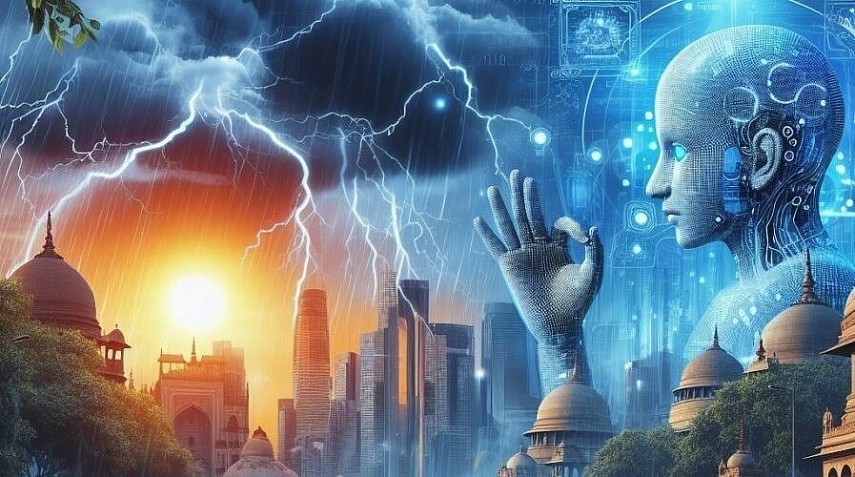AI disaster forecasting: Future technological trend
According to representatives from the Ministry of Agriculture and Environment, AI-powered forecasting models will have higher accuracy and shorten the time to issue warnings, giving communities more time to respond.
A representative from the Ministry of Agriculture and Environment cited the World Meteorological Organization’s (WMO) message for the 2025 World Meteorological Day: “Working together for a comprehensive early warning system,” as saying hydrometeorological issues and natural disasters are cross-border problems that require global coordination and data sharing.
 |
| AI-powered disaster forecasting models are expected to give communities more time to implement response measures - Illustration photo |
Therefore, thanks to investment in early warning systems, WMO member countries, including Vietnam, can continuously receive real-time meteorological and hydrological observation data, helping strengthen input information to provide better forecasts and warnings.
The WMO states that today, new technologies combined with vast datasets on meteorology and hydrology are changing how early warning systems for natural disasters are provided. In recent years, AI and other technological advancements have proven to be beneficial. For instance, the capability to digitize and store bigger historical climate data has enhanced the accuracy of long-term forecasts and facilitated the development of plans to address future climate change.
In Vietnam, AI research is currently being applied to forecasting storms, rainfall, and rare, irregular phenomena. The National Center for Hydro-Meteorological Forecasting (Hydrometeorological Department, Ministry of Agriculture and Environment) has begun incorporating AI into storm intensity forecasting models.
Initial results from integrating AI into these models have been promising, with higher accuracy compared to traditional tools. This model will be implemented by the meteorological and hydrological sector during the 2025 storm and flood season.
Additionally, the center is testing AI applications for hydrological forecasts, floods, and inundation predictions based on input factors, such as forecasts, observations, natural factors, and reservoir operations.
The key challenge for the meteorological and hydrological sector is that AI processing requires substantial information infrastructure, financial resources, and a team of highly-skilled IT professionals. Currently, there is a shortage of AI talents, especially those with expertise in specialized fields such as meteorology and hydrology, and it is hard to retain such talents with the current remuneration mechanisms. Moreover, the infrastructure needed for AI computation and processing requires high-speed chips at a significant cost.
However, given the importance of science and technology, especially in the context of increasingly complex climate change, it is clear that a country will lag behind without investing in and leveraging the power of science and technology. Therefore, the application of AI in forecasting is crucial and urgent.
Article URL: https://ven.congthuong.vn/ai-disaster-forecasting-future-technological-trend-57111.html
Print ArticleCopyrights of Vietnam Economic News, All rights reserved VEN.VN | VEN.ORG.VN
